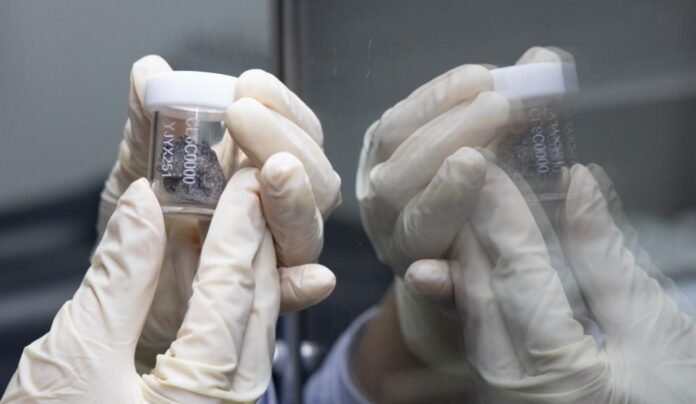New Delhi, Oct 21 – Chinese scientists investigating samples from the Chang’e‑6 lunar mission have found rare meteorite leftovers that could change how we think about the Sun’s planetary family.
The team at the Guangzhou Institute of Geochemistry, part of the Chinese Academy of Sciences, pushed the limits of laboratory tools to look closely at the moon’s soil. They measured the minerals and tiny isotopes of oxygen inside the samples and discovered that some fragments are almost identical to CI chondrites – a kind of meteorite that is heavy in water and organic material and usually comes from the outer edges of our Solar System.
CI chondrites are so uncommon on Earth that they make up less than one percent of all meteorite finds. The Moon, however, is a perfect record keeper. Without an atmosphere or plate tectonics, the lunar surface keeps a clean trail of old asteroid hits for us to study.
Finding evidence of these outer‑Solar‑System rocks on the Moon tells scientists that Earth and its satellite have likely survived more collisions with water‑rich meteorites than we thought. It also gives a clue to the mystery of lunar water. “Seeing these materials on the Moon shows that material from the far side of the Solar System can travel to the close‑by planets,” said Lin Mang, a researcher at the Guangzhou Institute. “It also helps us map how water has moved around the Moon over billions of years.”
The work does more than shine new light on our cosmic neighborhood. The researchers also set up a step‑by‑step method that can be used to spot meteorite material in samples from other places – be it the Moon, Mars, or asteroids. That makes future space missions a bit easier to plan.
The Chang’e‑6 rover landed on the far side of the Moon last year and collected 1,935 grams of soil from the South Pole‑Aitken Basin. That basin – the biggest, deepest, and oldest impact scar on the Moon – was the site for the sample haul. The clean, lightly altered rocks are now giving astronomers fresh data about the early Solar System.
In short, the discovery of CI‑type meteorite fragments in lunar soil shows that the Earth‑Moon duo have been hit by more water‑rich space rocks than scientists assumed. It also opens a new chapter in understanding how water and organic materials arrived on the Moon, and possibly how they arrived on Earth.
Source: ianslive
Stay informed on all the latest news, real-time breaking news updates, and follow all the important headlines in world News on Latest NewsX. Follow us on social media Facebook, Twitter(X), Gettr and subscribe our Youtube Channel.



